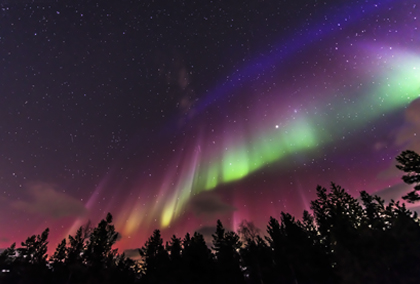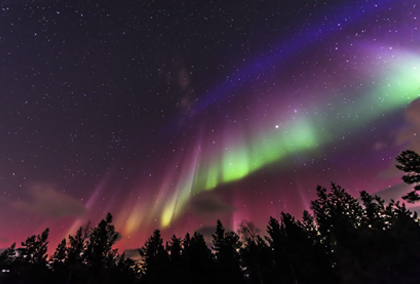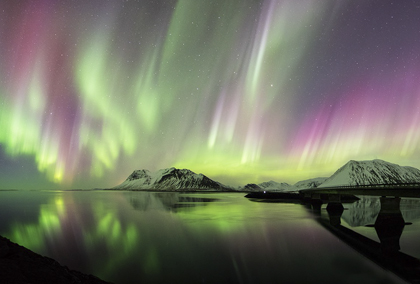auroras
named after the roman goddess of dawn, the aurora is a peculiar and unpredictable display of light in the nocturnal sky. auroras are a striking sign that sun and earth are connected by more than sunlight. they indicate that this celestial connection is electric; the sun provides the auroral energy, but its particles come from the peripherals of earth. auroras are the outcome of collisions between rapid-moving electrons from the sun with oxygen and nitrogen found in the upper atmosphere of earth. while usually a milky greenish color, auroras can also show red, blue, violet, pink, and white. their color is dependent on which gas - oxygen or nitrogen - is being excited by the electrons, and on how excited it becomes. the color also depends upon the speed of the electrons, and the energy they have at the time of their collisions. various cultures react differently to auroras. the impassive viewer would see colorful, fine hairlines of light ruffling in the night sky. while a sheer spiritual would perceive a rather mystical, heavenly imagery. an ancient chinese folklore recognized cultural symbols; great dragons or serpents in the skies. some native american tribes pictured spirits carrying lanterns as they sought the revenants, while eskimos conceive playful souls. in norway, the aurora is to be looked upon with awe prohibiting any action. to each his own perception, interpretation and beliefs. however, no one can deny that light - no matter its source - is the most vivid, sublime form of beauty solely ought to be cherished.



